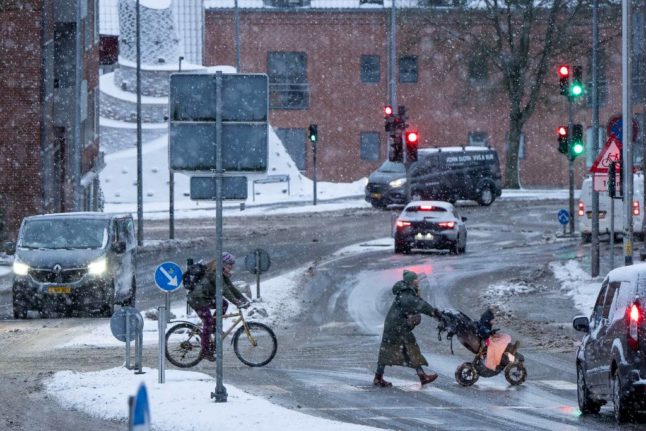The Danish Meteorological Institute, DMI, uses three different warning categories for dangerous weather, with category 3 being the most dangerous.
The warnings could relate to severe rain or snow, icy conditions or conditions caused by a combination of things like snow drifts, which occur when strong winds move loose snow. High winds and storms can also give weather alerts, as can very hot weather.
DMI also sometimes issues alerts ahead of other, more unusual weather events like storm surges, which cause flooding.
Category 1: Severe weather (Voldsomt vejr)
Be aware that weather conditions can affect your surroundings and outdoor activities.
Category 2: Hazardous weather (Farligt vejr)
Be prepared for weather conditions to affect your surroundings and disrupt traffic. Follow the authorities’ advice and be extra careful when you’re out and about.
Category 3: Very hazardous weather (Meget farligt vejr)
Follow the advice of the authorities. Be prepared that there is a high risk that weather conditions may affect you and your surroundings and disrupt day-to-day activities.
This category often comes with a warning to stay at home if possible.
Key weather vocabulary to be aware of
Snow (Sne)
Kraftigt snefald, snestorm, snefygning
Heavy snowfall, blizzard, snow drift
When DMI warns of a snowstorm (blizzard), you should not go outside unnecessarily. Heavy snowfall (kraftigt snefald) reduces visibility and disrupts traffic, with smaller roads at risk of being closed. There is also a risk that public transport is delayed or stops running.
A snow drift (snefygning) can lead to the rapid closure of exposed roads, reduced visibility and public transport cancellations.
Wind (Vind)
Orkan, storm, stormende kuling, vindstød
Hurricane, storm, gale-force winds, gust of wind
Rain (Regn):
Nedbør, kraftig regn, langvarig regn, oversvømmelser, vandstand, bølger
Precipitation, heavy rain, prolonged rain, flooding, water level, waves
Storm (Torden)
Torden og skybrud, stormstyrker, strøm, lufttryk
Thunderstorm, storm strength, power, air pressure
Fog (Tåge)
Tæt tåge
Dense fog
Temperature (Temperatur)
Havtemperatur, hedebølge, kuldebølge, tropenat
Sea temperature, heatwave, cold wave, tropical night
Where can I find out more?
You can keep up to date with DMI’s current weather alerts via this link.



 Please whitelist us to continue reading.
Please whitelist us to continue reading.
Member comments